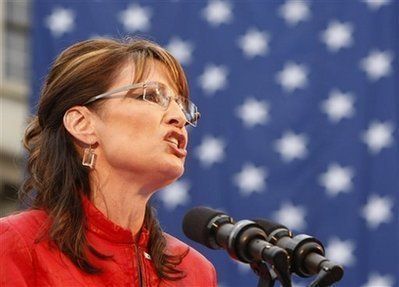
Truth: Palin won the race to become Governor of Alaska.
Truth: The number of registered voters in Alaska is smaller than the population of Staten Island.
Palin won the election through speeches given in fields and door-to-door canvassing. Without a doubt, she did both effectively. But it was still what would look, anywhere else in the country, like a mayoral race. When we factor that in, the distance from Mayor of Wassila to vice-presidential candidate is even more embarrassingly narrow.
[I was in Anchorage during the 2006 election. I can't deny my bias, here: I was sleeping on Tony Knowles's air mattress and working on his campaign. I went rafting wearing Palin's democratic rival's dry suit.]
When we make "governor" an automatic testament to experience and legitimacy, we equate wildly different roles. Running Alaska isn't running New York or Washington. Its geographic grandeur is misleading -- leading the state means presiding over a tiny populace, smaller even than South Dakota's. There's no question that leading a state with interests as complicated as Alaska's is a daunting task that requires expert statesmanship. But it requires a specific type of frontier leader -- my concern isn't that Palin lacks foreign policy experience (though that's certainly true), it's that she lacks skills in domestic politics suited to any state but her own.
Over 40% of Alaskans live in Anchorage. You win the state by winning a city, and not even a large one (it's got one Barnes & Noble -- one of the state's two). You don't win a campaign with television ads. You win by shaking as many hands as you can in six months, and hope the owners of all those hands eventually stroll into the voting booth.
Of course, as we've seen, there's no underestimating the courtship power of Palin's smile and demeanor.
Those who looked more closely, however, weren't fooled. Look at how the election data broke down in 2006 (source: Wikipedia). Alaska reversed conventional voting - rural regions went blue, more populated regions (we can't really call any of Alaska "urban") went red. And the reason is that the indigenous people of Alaska, most living in remote villages, recognized in Palin a dismissal of their way of life, a governor who ran to protect the oil elite at the cost of fracturing both environment and community with roads and pipelines. Native Alaskans weren't a pocket minority - at 110,000 strong, they represent 1/6 of Alaska, and felt so disregarded by Palin that her candidacy reversed nationwide trends or rural regions going republican.
They saw her close-up, sat with her ideologies for the months of the gubernatorial race. In droves they realized her rampant disregard for lifestyles that aren't conservative and Christian, her disregard of those who care more for quality of life and environmental preservation than unsustainable profits through mortgaging natural assets. We can see in their fear, and their subsequent abuse at the hands of the Palin administration (extinguishing Alaskan Native's reservation status and land claims, mining in environmentally sensitive areas, threatening the sanctity of the Arctic National Wildlife Refuge) the forecast for any minority group under a McCain/Palin administration.